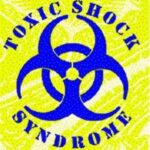Most people are not aware of this condition, toxic shock syndrome, or TSS, but this form of bacteria infection is serious and not common. For curious minds, it was first linked to tampon usage, but in recent years, it has been linked to the contraceptive sponge and the birth control method of a diaphragm.
In addition to women’s personal hygiene products, it also came from secondary wounds to very minute trauma and/or surgery incisions. This allowed bacteria to make entrance into the body and produce the infection.
What is toxic shock syndrome? Toxic shock syndrome, or TSS, consists of two forms: toxic shock syndrome and streptococcal toxic shock syndrome, or STSS.
Toxic shock syndrome is produced as a result of staphylococcus aureus bacteria. Its linkage has been in connection to using tampons. Despite this connection, it is deemed as unclear. Studies demonstrate that various kinds of high-absorbent tampons are moist; therefore allowing the bacteria to make entry.
On the other hand, streptococcus bacteria produce streptococcal toxic shock syndrome, or STSS. Generally, STSS appears after these bacteria infections have infected portions of the injured skin, as in cuts, scrapes, and/or surgical wounds. It hardly follows up on a simple streptococcus throat, or simply strep throat.
The following are a few of the symptoms that causes toxic shock syndrome:
- Vomiting
- High fever in which the temperature is approximately 102 degrees Fahrenheit.
- A sudden drop in blood pressure that is accompanied by fainting spells and lightheadedness.
- Headache
- Sore throat
- Muscle aches
Generally, a rash resembling sunburn appears within a twenty-four hour period. Other signs also include a large amount of redness underneath the eyelids or in the mouth. In the case of some women, a massive amount of redness may appear in the vaginal area.
In addition to the mentioned symptoms, there are a few more of them. These include:
- Confusion or other alterations in terms of mentality.
- Tiredness and becoming feeble
- Thirst
Symptoms of streptococcal toxic shock syndrome, or STSS, are similar to TSS, except that within forty-eight hours of having this condition, these signs may occur:
- Blood pressure decreases so low that it becomes life threatening.
- Breathing becomes almost impossible and also pulse that is feeble and very fast.
- The would that has the infection may become swollen.
- The possibility of the liver and kidneys malfunctioning.
- There is possible to have bleeding dilemmas.
Normally, toxic shock syndrome is treated with antibiotics. If the infection is massive, such as an abscess, then a physician may be required to drain out the area with the infection. At times, steroids are used for the treatment of toxic shock syndrome, if it is severe.
Like toxic shock syndrome, STSS is also treated with antibiotics in addition to administering IV fluids and medications to keep the blood pressure at a normal rate. Surgery may be needed sometimes for the removal of dead skin and muscle surrounding the infected wound.
If individuals see and/or feel any of these symptoms: hands and feet that have a cold feeling, feeble and rapid pulse, and breathing that is rapid and unusual, it is imperative that the physician should be contacted.
Source:
http://kidshealth.org/parent/infections/bacterial_viral/toxic_shock.html




